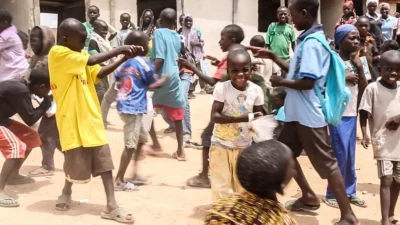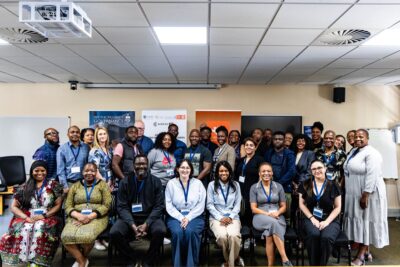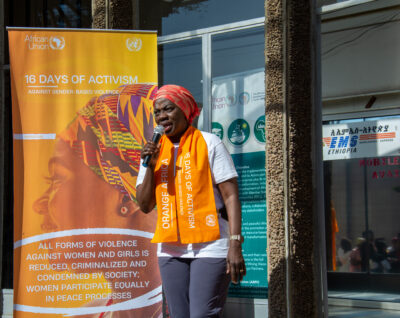If there’s one thing scholars of religion can agree on, it’s this: There is no consensus about what constitutes the object of religious studies. It is also true that religious studies and science studies tend to sit in hierarchical relation, wherein religion is often viewed by the latter as one path into the study of the social but never its principal explanation. A narrative of secularity has justified the distinction between these fields and elided what they hold in common. If science studies and religious studies were convened absent such a narrative, what knowledge would emerge from their encounter?
By choreographing movement between the social studies of science and the academic study of religion, Sensing the Social brings to life the sense of the social that Bruno Latour suggested can be felt only through purposeful arrangement. Latour wrote in 2005 that “the massive and ubiquitous evidence of the social order” would seem to suggest that the object of the social sciences “was easy to locate.” Yet he found the opposite was true: “There is nothing more difficult to grasp than social ties.” The social, he observed, “is traceable only when it’s being modified.” Continuous modification, purposeful in its arrangement, brings the social more firmly into view.
Latour provides an anchor for Sensing the Social, a project which features writing by eighteen scholars whose work, individually and collectively, reflects wide-ranging expertise, preoccupations, and methodological approaches. This project is unusual for selecting a thinker rather than a text to orient its ultimate aim. The choice of Latour as anchor (not celebrant) reflects an awareness that science studies and religious studies hold few texts in common, and that his body of work is among the most widely known and debated by scholars in and across both fields. Other choices were certainly possible.
* * *
Sensing the Social is organized into two parts.
Part one comprises six paired dialogues, each pair featuring one science studies scholar and one scholar of religion. In fall 2024, scholars whose primary research is located in either field were invited to converse with a scholar working in the other field. The pairings reflect editorial decisions rather than contributors’ preferences, and several invitees agreed to participate without knowing with whom they would be matched. Once matched, each pair was asked to produce a text-based conversation that takes up an idea, concept, or theory addressed by Latour. It was left up to each pair to decide how much of Latour to engage. Most spoke over Zoom, enabling the transcription feature, and submitted cleaned-up versions of their conversations. These texts subsequently underwent some editing for length and clarity.
Part two comprises six essays written by scholars who work across science studies and religious studies. In winter 2025, these scholars were invited to produce synthetic responses to the conversations in part one. Matches between the respondents and the pairings were here again editorial suggestions; the goal was to ensure that every pairing was discussed in at least one synthetic essay. It was the respondents who decided ultimately which pair(s) to engage and what topics to explore. These essays were also edited for length and clarity.
Longtime readers of TIF will find that Sensing the Social hybridizes some familiar forms. One of these is a conversational format introduced by former TIF editorial board member Nancy Levene. It was first adapted for use in “The corporate form,” a thematic forum, and later in a book forum on Church State Corporation by Winnifred Fallers Sullivan. Sensing the Social also draws inspiration from two special projects published previously at The Immanent Frame, “Is this all there is” and “A Universe of Terms,” whose conveners thought deeply about form and knowledge, argument and accessibility, image and narrative.
* * *
Convening religious studies and science studies scholars around a well-known thinker to ask what might emerge from their encounter proved unnecessary. Scholars tended to prefer talking about their own and each other’s work than about Latour. That’s not to say the contributions are self-referential. Curiosity about one’s interlocutor, whether an immediate dialogue partner or a pairing to whom one is responding, comes through in every text. What I mean is that Latour’s impact on the thought of the contributors—the extent to which they think with him about unresolved problems in their fields or at all—varies considerably. No one thinker predominates here, not even Latour, who, the deeper one delves into the project (if part one and part two are read sequentially), the more he recedes from view.
Scholars today are reaching for many thinkers and sources, rarely a canon. This vast plurality is one way that scholars are contending with the violent histories of their fields. Annette Aronowicz gives an account of the reckoning in her response to Sarah Hammerschlag and Taylor Moore, noting the occlusions that scholars risk in their attempts to remedy past silences. The turn to a wider roster of thinkers and sources might also speak to changes underway in anthropology: the waning influence of pioneering theorists like Geertz and the increased interest among emerging scholars to address and remedy immediate social problems, as Webb Keane says of his current graduate students. At a time when emerging scholars are pressing for greater alignment between the theoretical and the empirical, established scholars who work across two or more fields demonstrate, as Mayanthi Fernando and Donovan Schaefer do in their essays, the potentiality of this demand. For George Aumoithe and Ahmad Greene-Haynes, whose collaboration preceded and occasioned the invitation to participate in this project, the ongoing, disproportionate violence against Black Americans necessitates engagement with an ever-wider network of scholars and practitioners—across and beyond the university—in the fields of public and mental health.
While many of the featured scholars conduct international and comparative research, all but one work and reside principally in the United States. The trend I have named may thus uniquely characterize the American academy at this time. Lisa Sideris provides an insightful angle on this development, suggesting that our reality is “serious and agonizing in a way that makes an ethical claim on us and renders terms like ‘moral panic’ a bit too dismissive.” Sideris interweaves memoir, poetry, political commentary, contemplative thought, and personal narrative to explore “the strange dissonance that comes with inhabiting competing and seemingly incongruous worlds simultaneously.” Scholars in the United States, shaped at once by grief, wonder, and loss, may be turning more and more outward—beyond known figures in their fields—as they search for new ways, as Sideris does in her engagement with Douglas Christie, to “heal fragmented and detached perception.”
Latour does make a sustained appearance in one conversation—between Tanya Luhrmann and John Tresch—and it is to that dialogue the reader of this project is first led. Across Sensing the Social as a whole, On the Cult of the Factish Gods is the one work by Latour most frequently cited. Scholars of religion and the social studies of science seem to agree that Latour’s “factish” concept, which attunes us to the fabrication inherent in both ritual and scientific processes, holds enduring significance for their fields. As Paul Christopher Johnson recalls of his earlier research on Afro-Brazilian Candomblé, then as now “self-making and god-making, or self-making and fact-making, are inseparable.” But if Latour’s 2010 monograph opened up possibilities for reclaiming the “fetish” as a critical concept for religious studies, more work is needed, as Hammerschlag writes elsewhere, to unsettle the binary thinking at its constitutive core.
This work of unsettling is modeled in complementary ways by the anthropologists of religion and by the historians of science featured in this project. Every anthropologist, for instance, references Witchcraft, Oracles, and Magic among the Azande by E.E. Evans-Pritchard, situating its contributions in time while also and to varying degrees arguing for why this classic text invites revision of prevailing views on experience, consciousness, and the real. If, as Erika Milam suggests, historians share an obsession with causality, the historians of science among this project’s contributors demonstrate highly plural approaches to causality’s pursuit. Any sustained inquiry into how knowledge is generated and how people agree that something is true, to paraphrase Milam’s words, leads today’s historian of science down many paths—whether regional histories of religion (Robyn d’Avignon); cultures of boredom (Henry Cowles); or overlapping systems of power and authority and violence (George Aumoithe).
All contributors to Sensing the Social are working through and against Western philosophical traditions of critique, asking where next critical thought might go. Each one gestures in some way to a future: the future of a field, the future of graduate education, the future of the truth, the future of life on this planet. And in this shared orientation to futures yet unknown, the scholars featured here reach for Toni Morrison, they reach for Edgar Allan Poe, for Jorge Luis Borges, and for other literary figures in whose words the social can be sensed.













